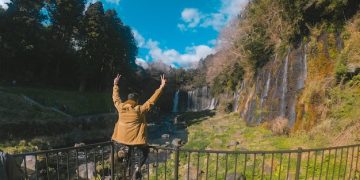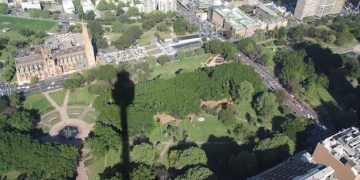Spotting Wildlife in the Peruvian Amazon: A Guide for US Nature Enthusiasts
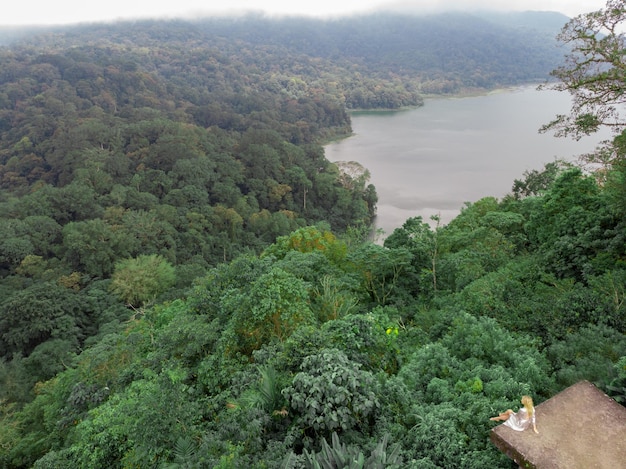
Spotting wildlife in the Peruvian Amazon offers US nature enthusiasts an unparalleled opportunity to witness diverse species like jaguars, monkeys, macaws, and river dolphins in their natural habitat, requiring careful planning regarding the best time to visit, suitable accommodations, and necessary precautions.
Embarking on a journey to the Peruvian Amazon is a dream for many US nature enthusiasts. The lush rainforest teems with an incredible array of creatures, from elusive jaguars to playful monkeys and vibrant macaws. This guide provides essential information for spotting wildlife in the Peruvian Amazon, ensuring a memorable and responsible adventure.
Planning Your Wildlife Adventure in the Peruvian Amazon
Before you pack your bags and head south, careful planning is crucial for a successful wildlife spotting trip in the Peruvian Amazon. Considerations range from the time of year to the type of accommodation you choose.
Best Time to Visit
The dry season (May to October) is generally considered the best time for wildlife viewing. Lower water levels concentrate animals near the rivers and make hiking easier. However, the wet season (November to April) offers unique opportunities to see migratory birds and experience the rainforest’s flooded landscapes.
Choosing the Right Accommodation
Several types of accommodations are available, from rustic eco-lodges to more luxurious jungle resorts. Consider your budget and comfort level when making your choice. Eco-lodges often offer guided tours and focus on sustainable tourism practices, while resorts may provide more amenities and convenience.
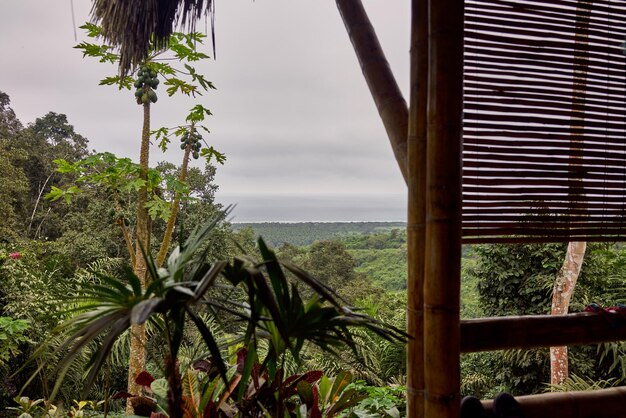
Here are key aspects to review while booking accommodation:
- Location: Opt for lodges deep within the rainforest for better wildlife viewing opportunities.
- Guides: Check if the lodge provides experienced guides knowledgeable about local flora and fauna.
- Sustainability: Choose accommodations committed to responsible tourism and environmental conservation.
By carefully planning your trip, from the time of year to your accommodation, you significantly increase your chances of having a rewarding wildlife experience in the Peruvian Amazon.
Essential Gear for Wildlife Spotting
Equipping yourself with the right gear is essential for maximizing your comfort and success while spotting wildlife in the Amazon. Specific items can make a significant difference in your experience.
Binoculars
A good pair of binoculars is arguably the most important piece of equipment. Look for models with high magnification and a wide field of view to spot animals from a distance and track them through the dense foliage.
Appropriate Clothing
Lightweight, breathable clothing is recommended to combat the heat and humidity. Long sleeves and pants are essential to protect against insect bites and scratches. Neutral colors are preferable to avoid startling wildlife.
Other Important Items
Don’t forget to pack insect repellent, sunscreen, a hat, and waterproof bags to protect your electronics. A headlamp or flashlight is also crucial for navigating the jungle at night.
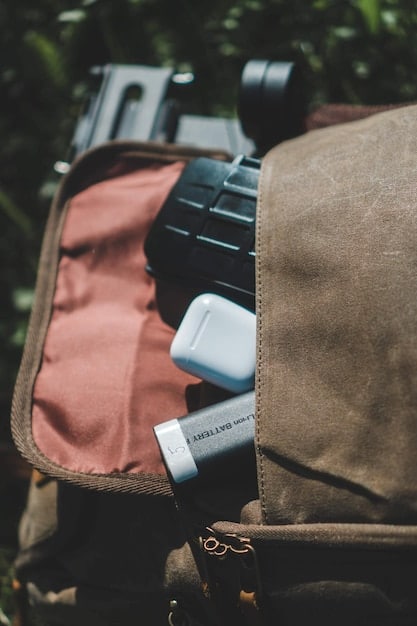
Here’s a quick checklist:
- High-quality binoculars
- Lightweight, long-sleeved clothing
- Effective insect repellent
- High SPF Sunscreen
Proper gear enhances not only your comfort but also your ability to observe and appreciate the Amazon’s wildlife effectively.
Navigating the Ethical Considerations
Wildlife tourism is a powerful tool for conservation, but it also carries ethical responsibilities. As a visitor, it’s crucial to minimize your impact on the environment and respect the animals’ natural behavior.
Respecting Wildlife
Avoid approaching animals too closely or making loud noises that could disturb them. Never feed animals, as this can alter their natural foraging habits and make them dependent on humans. Keep a safe distance to respect their habitat.
Supporting Local Communities
Choose tour operators who work closely with local communities and contribute to their economic development. This ensures that tourism benefits the people who live in the Amazon and helps to protect their culture and traditions.
Responsible travel in the Amazon hinges on several practices:
- Maintaining a respectful distance from wildlife.
- Choosing eco-conscious tour operators.
- Supporting local businesses and communities.
Prioritizing ethical practices helps to ensure the long-term health of the Amazon rainforest and its incredible biodiversity.
Identifying Common Wildlife in the Peruvian Amazon
The Peruvian Amazon is home to a vast number of species, many of which are unique to the region. Familiarizing yourself with some common wildlife can greatly enhance your spotting experience.
Mammals
Keep an eye out for monkeys, such as howler monkeys and squirrel monkeys, swinging through the trees. Capybaras, the world’s largest rodents, are often seen near the water’s edge. If you’re lucky, you might even spot a jaguar, the Amazon’s apex predator, though these elusive cats are rarely seen.
Birds
The Amazon is a birdwatcher’s paradise. Macaws, parrots, and toucans fill the air with their vibrant colours and loud calls. Look for hummingbirds flitting from flower to flower and herons wading in the shallows.
Being able to identify the wildlife significantly enhances the experience:
- Recognizing distinct bird calls.
- Understanding monkey behavior.
- Appreciating the uniqueness of each sighting.
Learning about the different species adds depth to your adventure, fostering a deeper understanding and appreciation for the rainforest’s biodiversity.
Understanding Amazonian Ecosystems
The Amazon rainforest is not a uniform landscape; it comprises diverse ecosystems, each supporting unique wildlife communities. Understanding these ecosystems can enhance your spotting skills.
Varzea Forests
Varzea forests are seasonally flooded areas along the rivers. They are rich in nutrients and provide important habitat for fish, turtles, and birds. Look for monkeys and sloths in the trees and caimans basking on the banks of the river.
Terra Firme Forests
Terra firme forests are higher-ground areas that rarely flood. They are home to a greater diversity of mammals and insects. Look for peccaries and tapirs on the forest floor and poison dart frogs among the leaf litter.
Understanding these ecological distinctions is helpful when spotting wildlife:
- Distinguishes habitat requirements for different species
- Allows for more focused searching in appropriate environments
- Deepens appreciation for ecological complexity
By recognizing the specific features of each ecosystem, you can better predict and appreciate the wildlife you encounter.
Guided Tours vs. Independent Exploration
Deciding whether to explore the Amazon with a guided tour or on your own is a crucial decision. Both options offer unique advantages and disadvantages.
Advantages of Guided Tours
Experienced guides possess in-depth knowledge of the rainforest, its wildlife, and its ecosystems. They can identify animals that you might otherwise miss and provide valuable insights into their behavior. They also ensure your safety and handle logistics, allowing you to focus on enjoying the experience.
Pros of Independent Travel
Independent travel grants you greater flexibility and freedom to explore at your own pace. It can also be more affordable. However, it requires extensive planning and preparation. You’ll need to be responsible for your own safety and navigation, and you’ll miss out on the expertise of a local guide.
Several factors should influence this key trip decision:
- Safety concerns
- Level of experience in rainforest environments
- Budget constraints
Carefully weighing the pros and cons of both guided tours and independent exploration is essential for planning the ideal Amazonian wildlife adventure based on your preferences and capabilities.
| Key Point | Brief Description |
|---|---|
| 📅 Best Time to Visit | Dry season (May-Oct) for better wildlife spotting due to low water levels. |
| 🎒 Essential Gear | Binoculars, lightweight clothing, insect repellent, sunscreen, and a hat are crucial. |
| 🐒 Common Wildlife | Monkeys, macaws, capybaras, and jaguars are among the species to look for. |
| 🤝 Ethical Considerations | Respect wildlife, support local communities, and choose eco-conscious tour operators. |
Frequently Asked Questions (FAQ)
Wear long-sleeved clothing, use a bug spray with a high concentration of DEET, and consider treating your clothing with permethrin for added protection against mosquito bites.
Yes, consult with your doctor or a travel health specialist about recommended vaccinations and medications, such as yellow fever, typhoid, and malaria prophylaxis to stay healthy.
Hiking boots with good ankle support are ideal for navigating the uneven terrain in the rainforest. Ensure they are waterproof or water-resistant to keep your feet dry in damp conditions.
It’s advisable to stick to bottled water or use water purification methods, as tap water in the Amazon is not safe to drink. This will reduce the risk of waterborne illnesses during your visit.
Remain calm and avoid sudden movements. Maintain a safe distance and notify your guide, if you have one. Never try to approach or interact with dangerous animals in the wild.
Conclusion
Spotting wildlife in the Peruvian Amazon is a transformative experience that demands careful preparation, ethical consideration, and a respect for nature. By following this guide, US nature enthusiasts can maximize their chances of witnessing the Amazon’s incredible biodiversity while contributing to its long-term protection. Enjoy the journey!

